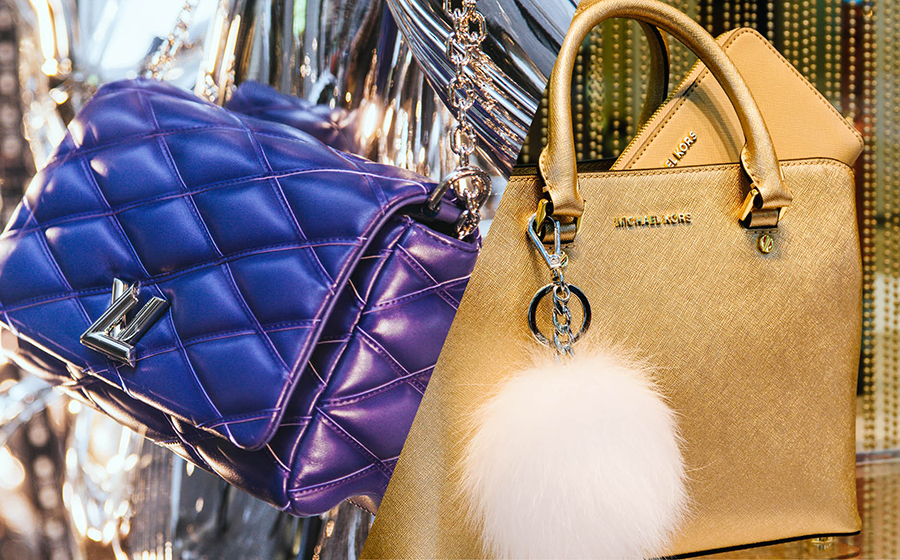The concept of luxury has become elastic. Its meaning seems to be constantly stretched and overused, without parameters either as a marketing tool or as a journalistic catchall. Fashion brands for example are often described as \”luxury\” and luxury brands and their strategies are often analyzed and judged as if they were fashion brands, subject to short-term stopgaps, and succumbing to fast-track trends.
I think this is a mistake but it can be corrected. Here\’s a back story.
In a 2018 edition of WWD, the lead article summarized a trend report compiled by the PMX Agency. The headline heralded a study of luxury, \”Michael Kors, Ralph Lauren Take Top Spots in On-Line Luxury Market Share.\”, A similar headline appeared in WWD in 2016 with Ralph first and Kors second! Coach, Louis Vuitton and Gucci came in third and fourth and fifth in what the study termed \”online traffic.\” Not to indict only WWD and PMX, Statista, a widely used market research firm, which compiles similar brand comparatives, has fallen into the same error.
What we have here is a classic problem of comparing apples with oranges. Without getting into the traffic metrics and how they are defined (and whether it\’s statistically valid for making business decisions), LV and Gucci are in another galaxy; placing them in orbit with RL, MK and Coach brings them into a solar system in which they don\’t belong. It pits these three upscale, aspirational fashion brands against the two of the most successful luxury brands in the world, with which they really do not compete. This questions so-called \”market share\” comparatives. If comparative market share data is to be useful, what\’s needed is a way to objectively distinguish fashion brands from luxury brands. Here are some ideas.
Timeless Pillars
Luxury brands are often associated with high prices, categorized as such because their collections, collectively and individual items, bear a higher pricetag than fashion brands. But price isn\’t the defining dimension of what is termed luxury. There are other much more definitive attributes. Luxury brands are built upon five timeless pillars:
- Rooted in a craftsman aesthetic which promises uniqueness and a heritage narrative which establishes authenticity. Luxury is anchored by desire, not want or need.
- Luxury products are marketed to achieve scarcity and maintain rarity with limited editions and controlled distribution channels.
- True luxury is never tethered to trends but is innovative in product and marketing, transcending popular trends.
- Luxury is supported by a business model wherein the brand drives the product and the business — not the other way around.
- Luxury is not seasonally driven and therefore free from the pressures of 15-week fashion cycles, which make assortments obsolescent, resulting in accepting markdowns as the price of doing business, negatively impacting both brand equity and customer loyalty.
These five pillars create brand equity and capital differentiating luxury from fashion brands. I call them Market Capital and Social Capital.
Market Capital
Using Coach as an example, many stock market pundits view it as luxury brand and therefore a great buy: its numbers are down almost 50 percent from its high and show 12x forward earnings while continuing to pay a dividend of 1.35 per share for a yield of 4.5 percent. But an analysis of the years between 2009 and 2018 shows operating income decreased and profits remained stagnant. In the context of its true competitive market, these results indicate the absence of what Warren Buffet has called \”business moats,\” unique competitive advantages which enable the valuable \”castle\” inside to be free from having its walls breached.
Alternatively, luxury brands have moats which result in meaningful market share, solid balance sheets and sustained growth. This is Market Capital. High margins, controlled distribution and deep pockets enable luxury brands to ride out the disruptive market conditions, which plague fashion brands, forcing the latter to weekly discounts, outlet stores and selling branded collections to off-price retailers. They have little Market Capital and thus find it difficult to achieve sustained growth. Their protective moats are narrow, shallow and easily crossed.
Social Capital
The other key asset that luxury has is Social Capital. True luxury brands have the narrative and symbolic power to appeal to vast blocs of consumers and forge tribal like communities as well as influence their behavior. Their brands are Global Cultural Icons. By creating a unique aesthetic and serving as a thought leader, luxury brands can break the rules and take risks (LV with Supreme and Gucci with its cornucopia of stunning brand imagery). Luxury brands project their vision into the zeitgeist finding its way into the arts, theatre, museums, music and other cultural influences that inspire consumer tastes and market trends. They constantly re-invent their brand Identities without compromising their brand integrity. This is made possible by creative directors who are anchored in the brand\’s DNA but not tethered to the brand\’s traditional messaging. These innovators influence their brand image perceptions through influencers, online communities and strategic use of social media.
Image
Fashion brands still struggle with striking the balance between their own perceptions of their brand identity, which may differ from their customers\’ image of it. Alternatively, luxury with its depth of Social Capital integrates identity with image by creating an ideology and cultural codes that give their products a new source of meaning. This fusion creates intense customer loyalty that stands the test of disruptive markets, including e-retailing and the likes of Amazon. Fashion brands cannot take such liberties and therefore have little latitude in controlling their brand perception. Ultimately, this is what distinguishes luxury from fashion.



